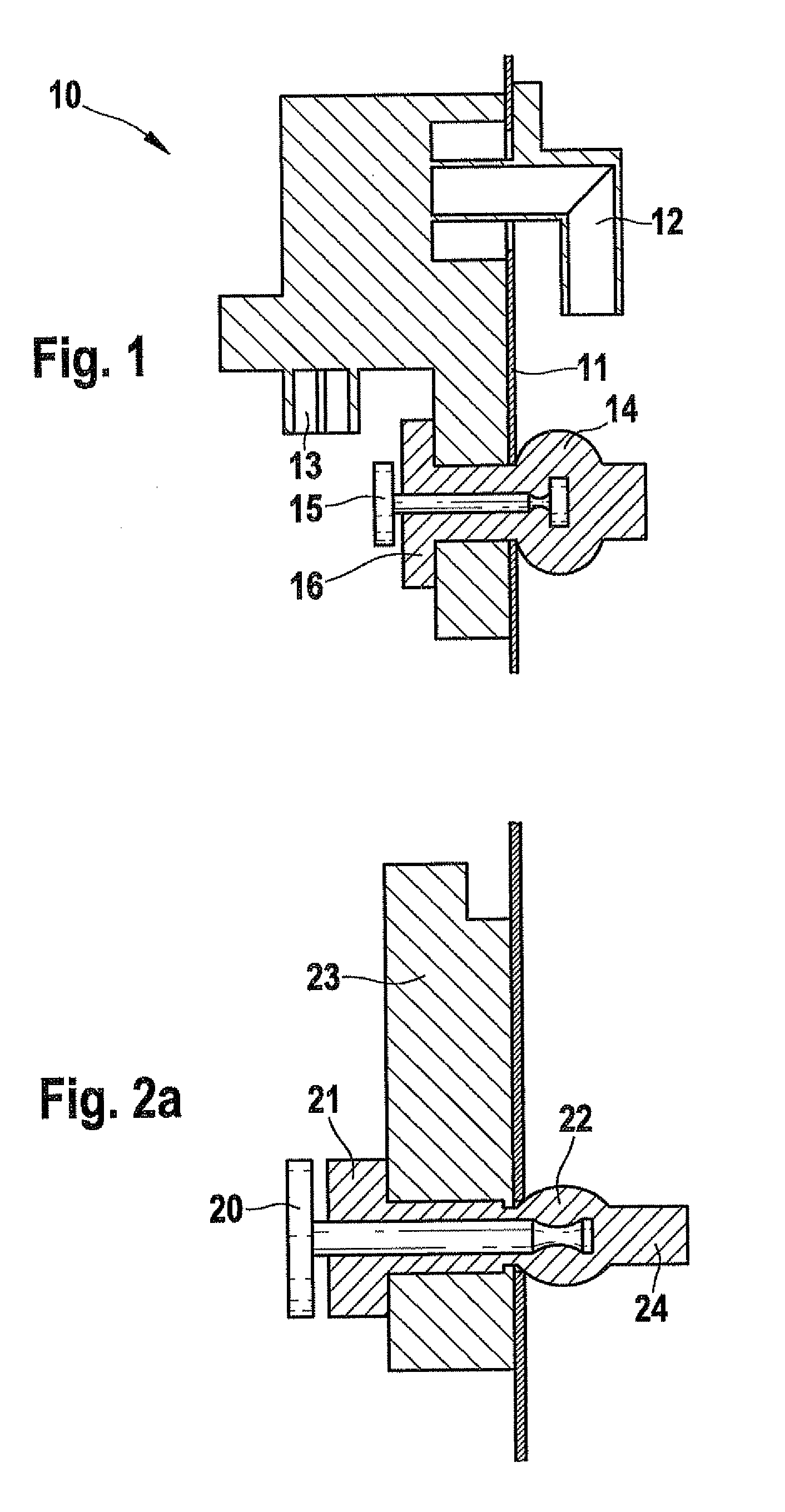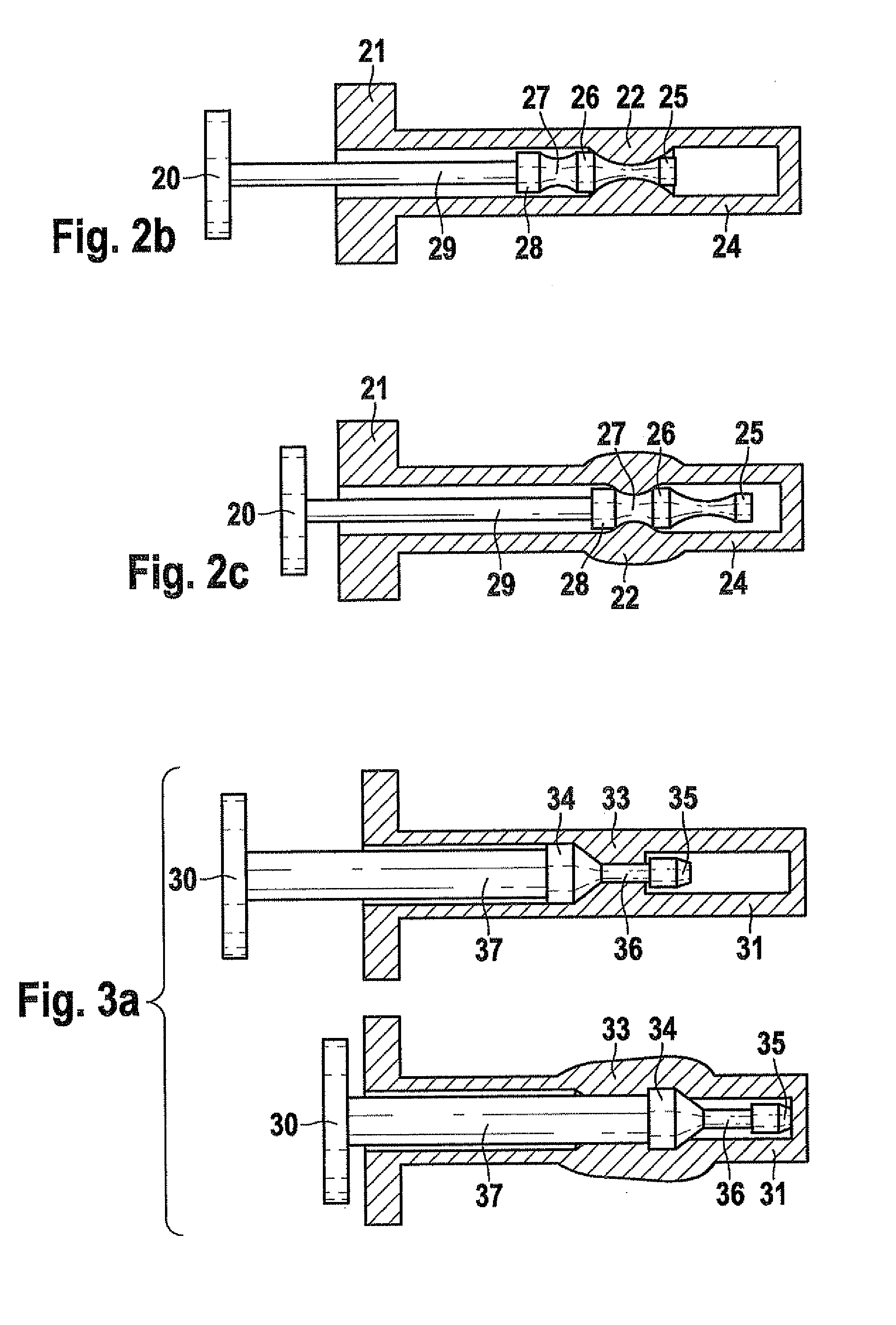Accident sensor
a sensor and sensor technology, applied in the direction of screws, electrical apparatus casings/cabinets/drawers, instruments, etc., can solve the problems of sleeve with studs, only with great force, etc., and achieve the effect of cost saving
- Summary
- Abstract
- Description
- Claims
- Application Information
AI Technical Summary
Benefits of technology
Problems solved by technology
Method used
Image
Examples
Embodiment Construction
[0021]According to the exemplary embodiments and / or exemplary methods of the present invention, an accident sensor with a stud and a sleeve, which are guided through a bore hole in the accident sensor, is fixed in place on a wall in the vehicle in that the stud with the sleeve is threaded through a hole in the wall and supports the accident sensor by a clamping effect. Studs or screws may be used in addition so as to define the installation position more precisely. The more precise installation position can also be aptly defined by the use of the use of a plurality of studs with sleeves. In this context it is possible that the stud is already inside the sleeve before it is fixed in place in the wall or that it is inserted into the sleeve only for the mounting in the wall, after the sleeve has already been passed through the hole in the wall and the clamping effect is produced by an expansion of the sleeve behind the hole in the wall.
[0022]FIG. 1 schematically illustrates how an air ...
PUM
 Login to View More
Login to View More Abstract
Description
Claims
Application Information
 Login to View More
Login to View More - R&D
- Intellectual Property
- Life Sciences
- Materials
- Tech Scout
- Unparalleled Data Quality
- Higher Quality Content
- 60% Fewer Hallucinations
Browse by: Latest US Patents, China's latest patents, Technical Efficacy Thesaurus, Application Domain, Technology Topic, Popular Technical Reports.
© 2025 PatSnap. All rights reserved.Legal|Privacy policy|Modern Slavery Act Transparency Statement|Sitemap|About US| Contact US: help@patsnap.com



